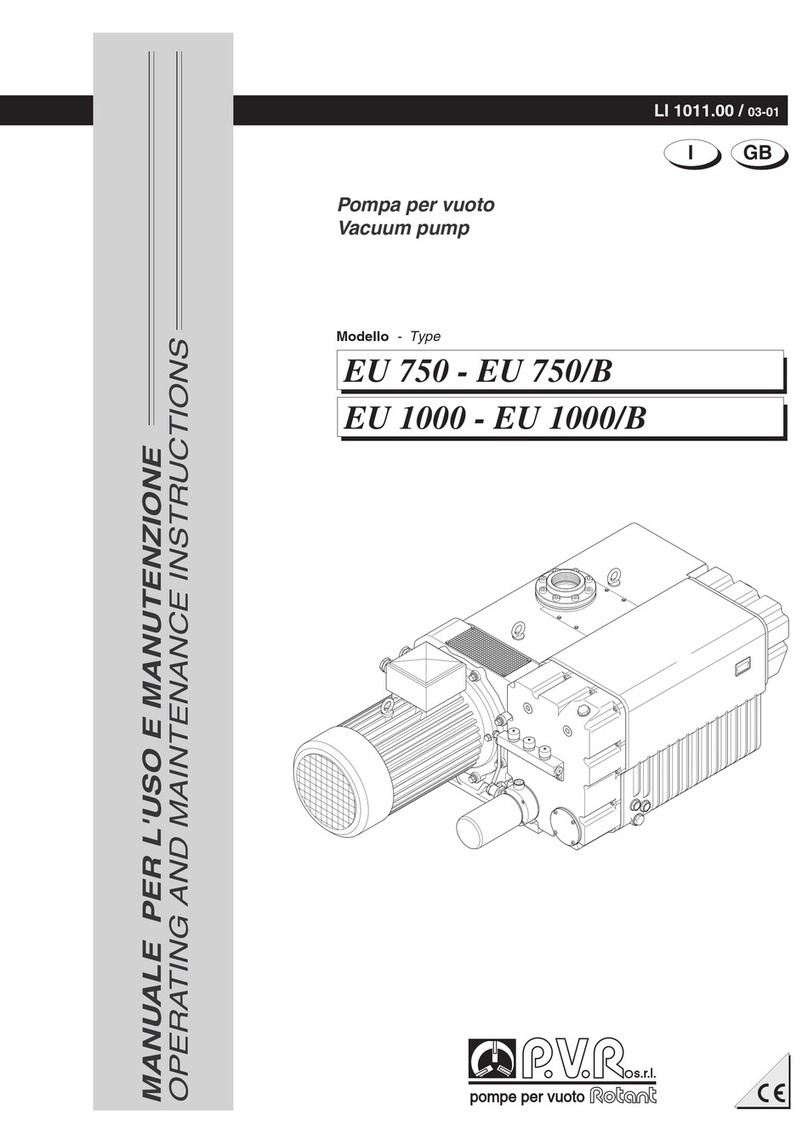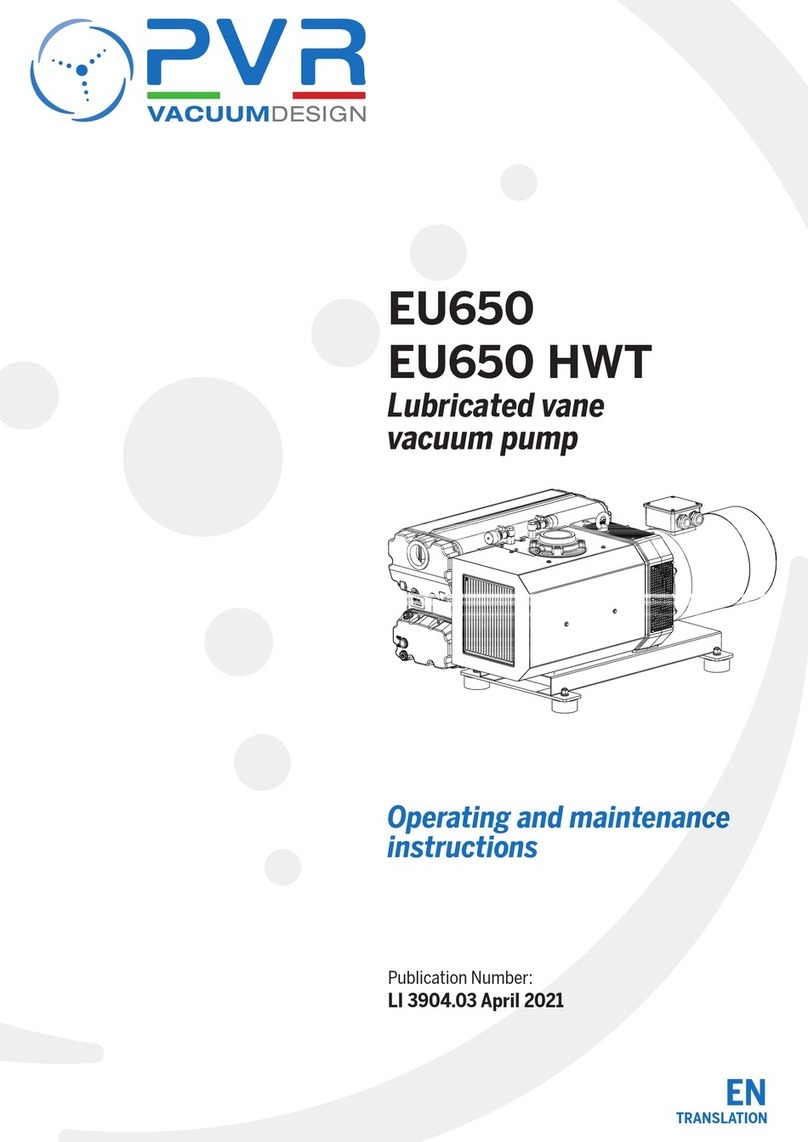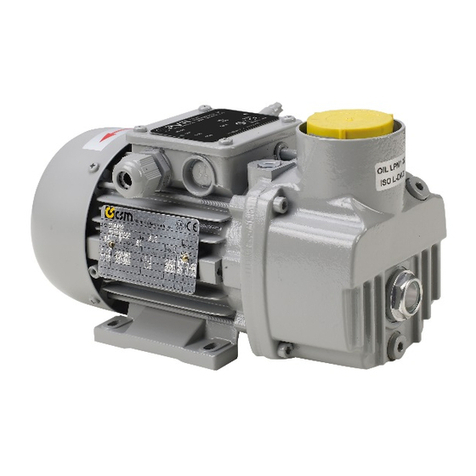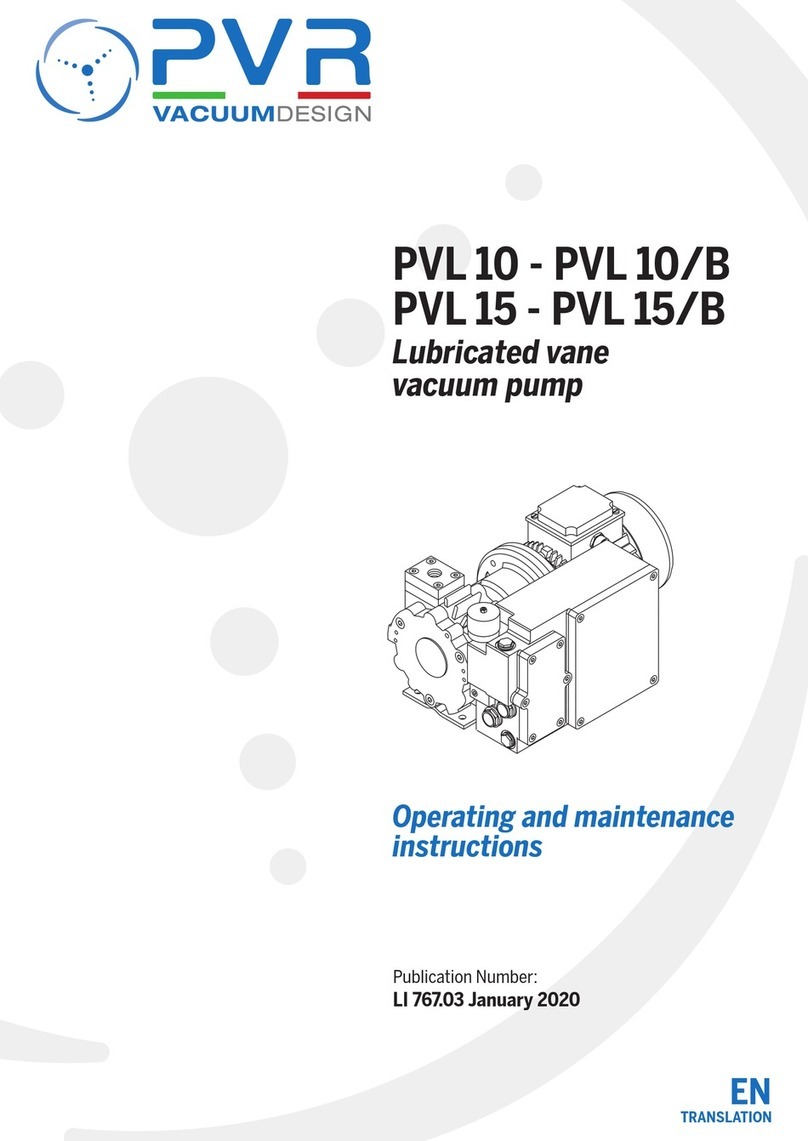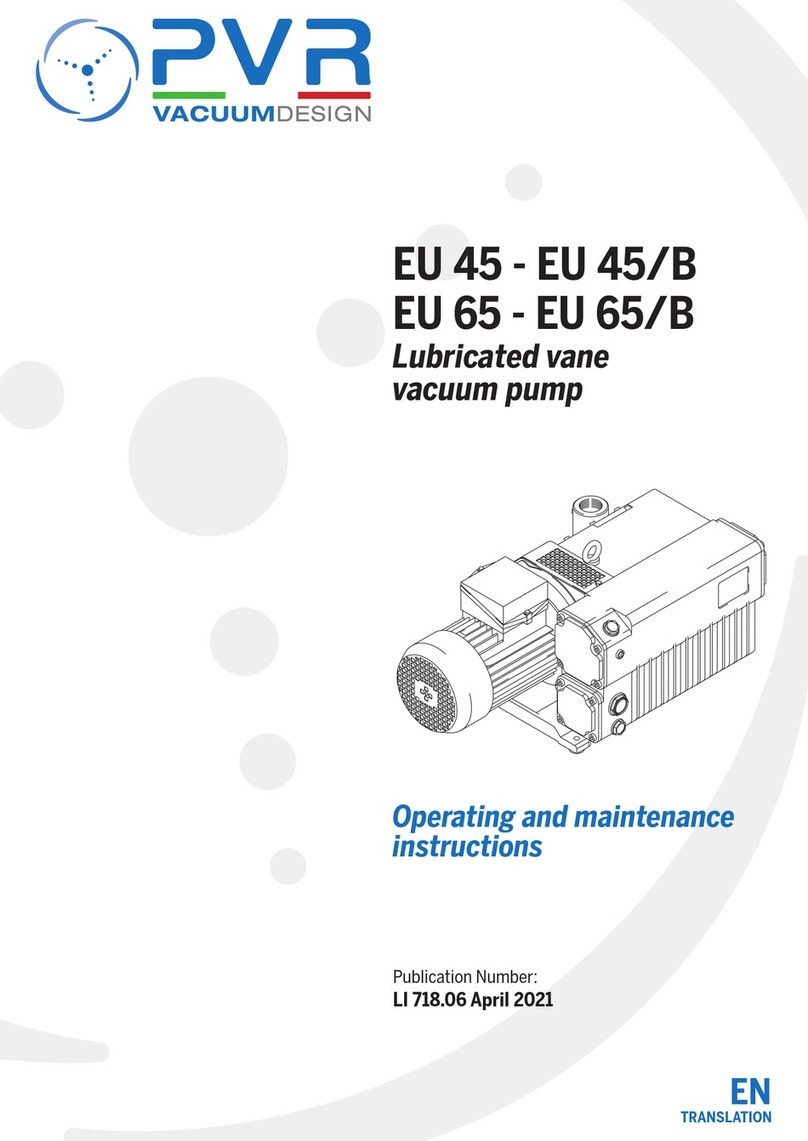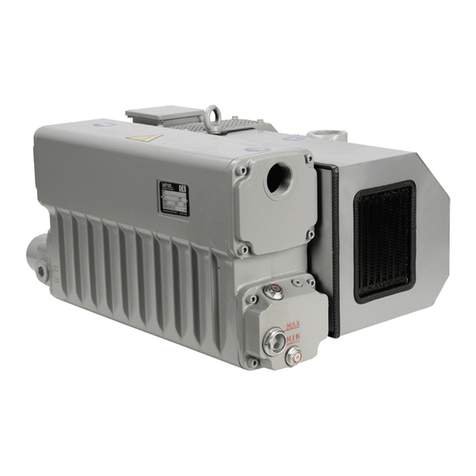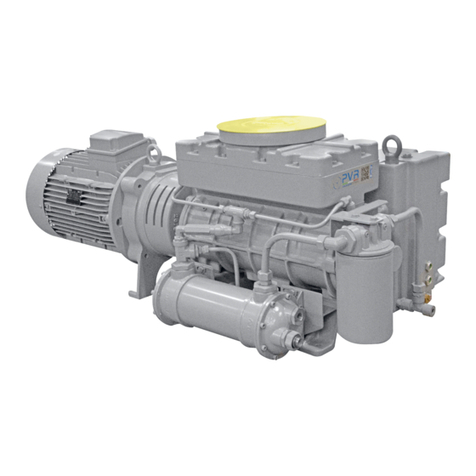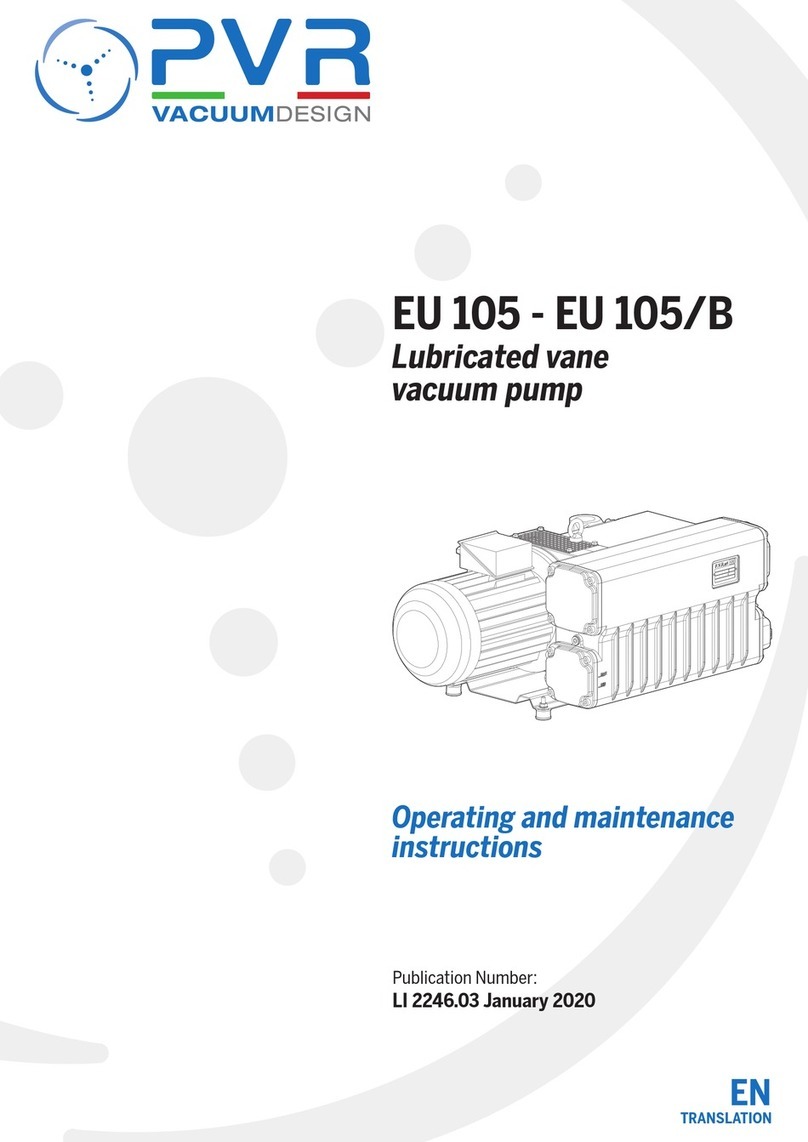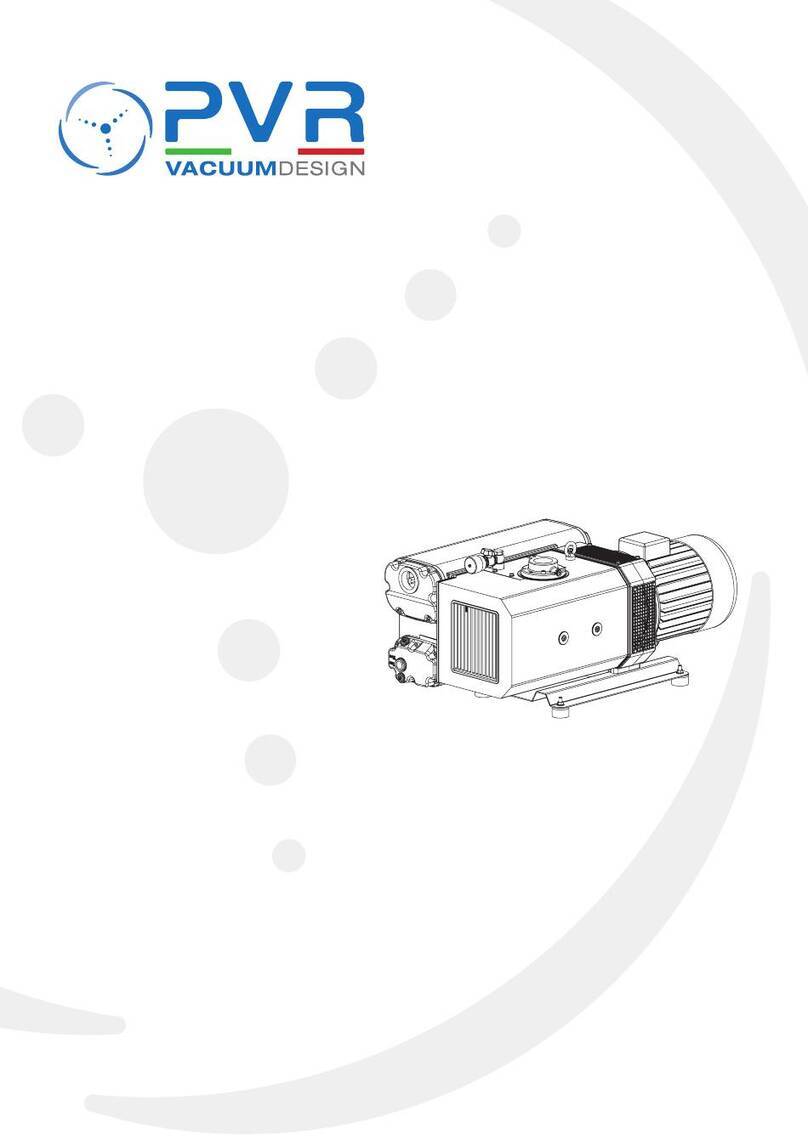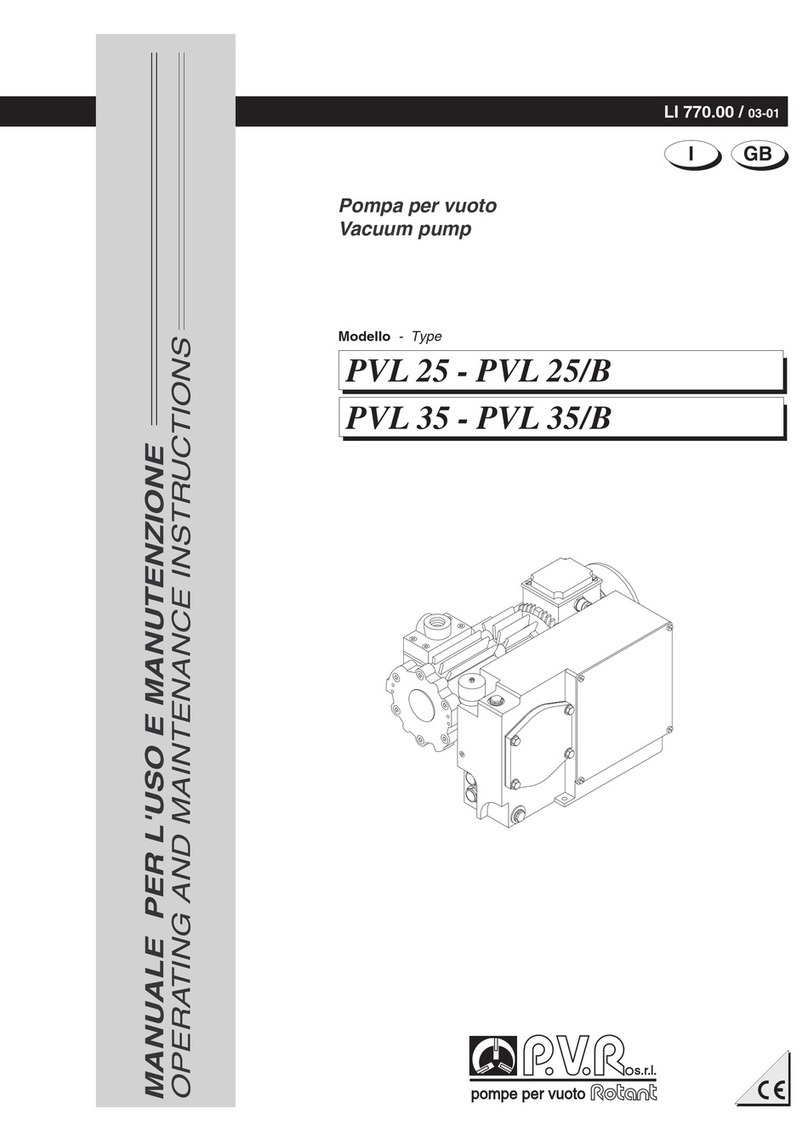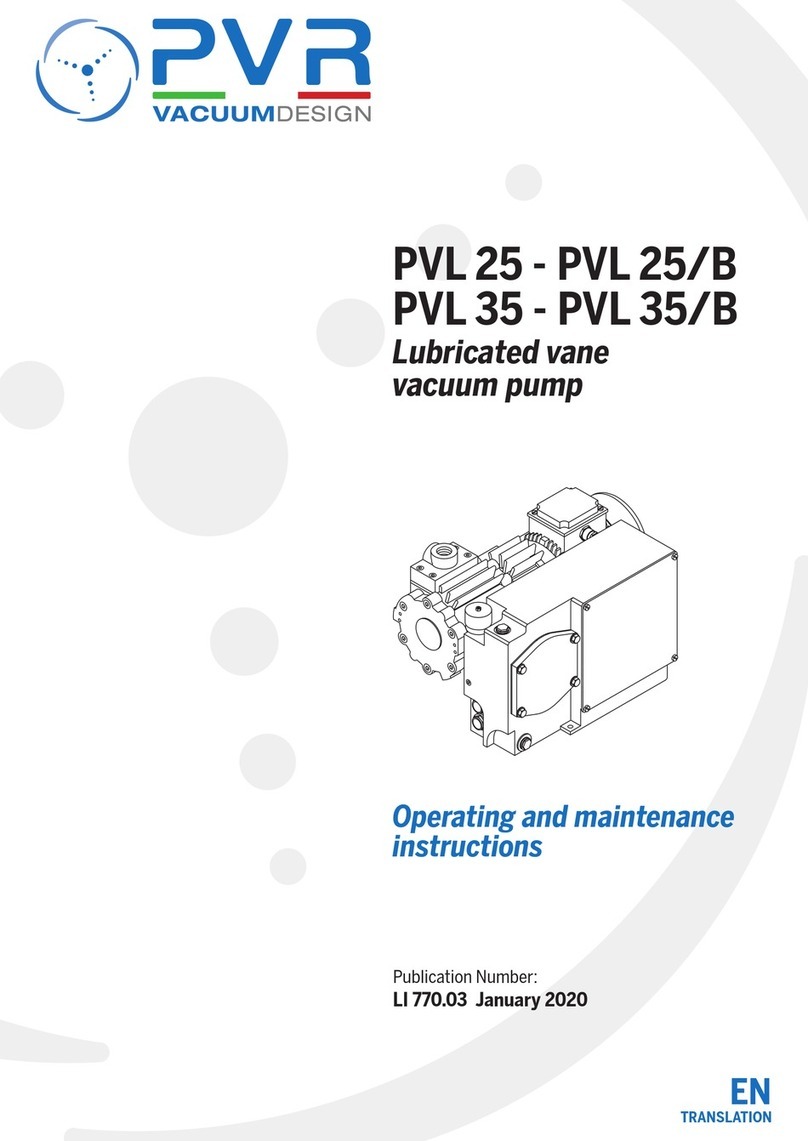
s.r.l.
pompe per vuoto
EU 105 - EU 105/B
7
3 PRESCRIZIONI DI SICUREZZA
ATTENZIONE:
Nonostanteleprecauzioni preseinfasediprogetto,esistonoelementi
di rischio che si presentano durante le operazioni che si eseguono in
fase di uso e manutenzione.
SUPERFICI CALDE
❑ Lesuperficidellapompapossonosuperarela temperatura di 80°C.
Installarelapompainunazonaprotettaaccessibilesolodapersonale
autorizzato, in modo da evitare scottature da contatto fortuito.
La pompa può essere inserita in altri macchinari predisponendo le
protezioni necessarie.
Primadieffettuarequalsiasiinterventosullapompaattendereilsuo
raffreddamento.
EMISSIONI DI SOSTANZE NOCIVE
❑ L'aria di scarico della pompa contiene tracce di nebbie d'olio.
Verificare la compatibilità con l'ambiente di lavoro. Un guasto o
l'usura delle tenute possono provocare perdite d'olio lubrificante.
Evitare la dispersione nel terreno e l'inquinamento di altri materia-
li.
Nel caso di aspirazione d'aria contenente sostanze pericolose
(esempio agenti biologici o microbiologici), adottare dei sistemi di
abbattimento prima di immettere l'aria nell'ambiente di lavoro.
Gli oli esausti provenienti dalla pompa devono essere smaltiti se-
condo le normative vigenti nel Paese d'utilizzo della pompa.
Non disperdere nell'ambiente.
PERICOLO GENERATO DA DEPRESSIONE
❑ Evitare il contatto con l'attacco aspirazione della pompa durante
il funzionamento.
Immettere aria nel circuito di aspirazione prima di ogni intervento.
Il contatto con punti in depressione può essere causa di infortuni.
PERICOLO GENERATO DALLA PRESSIONE
❑ Ilserbatoiodellapompaèpressurizzato.Nonaprireenondimenticare
aperti i tappi di carico o scarico durante il funzionamento.
PER UNA MANUTENZIONE SICURA
❑ Tutte le operazioni di manutenzione devono essere effettuate da
personale specializzato a pompa ferma.
Devonoessereadottatemisurepergarantirel'isolamentodall'energia
elettrica,impedendoavviamentiimprovvisi(es.bloccarel'interruttore
di potenza con un lucchetto personale).
SICUREZZA ELETTRICA
❑ Nell'equipaggiamento elettrico esistono parti sottoposte a tensio-
ne che, al contatto, possono provocare gravi danni a persone e
cose.
I lavori di allacciamento e di controllo dell'impianto elettrico devono
essere effettuati esclusivamente da personale specializzato in
materia.
GliequipaggiamentielettricidevonoessereconformiallanormaEN
60204-1 e ad altre leggi vigenti nel Paese d'utilizzo della pompa.
PERICOLO DI INCENDIO
❑ ATTENZIONE ! L'utilizzo della pompa per impieghi non previsti o
proibiti da questo manuale, oppure la mancanza di una corretta
manutenzione,possonoprovocare anomalie difunzionamentocon
rischio di surriscaldamento e incendio.
In caso di incendio non usare acqua per spegnere le fiamme.
Utilizzare estintori a polvere o CO2od altri mezzi compatibili con la
presenza di equipaggiamenti elettrici ed oli lubrificanti.
3 SAFETY RULES
ATTENTION:
Despite of the precautions taken during the planning stage, there are
some risk elements that arise during the operations carried out while
working and servicing.
HOT SURFACES
❑ Thepumpsurfacesmayexceedthetemperatureof80°C. Installthe
pump in a protected area accessible only by authorized personnel,
to avoid burns due to chance contact.
The pump can be placed inside other machineries by adopting the
necessary safeguards.
Before carrying out any maintenance on the pump, be sure the
pump is cool.
HARMFUL SUBSTANCES EMISSIONS
❑ The discharge air from the pump contains part of traces of oil mist.
Check the compatibility with the work environment.A failure or the
seals wear can cause leak of lubricant oil.
Avoid the dispersion in the ground and the pollution of other mate-
rials.
Incaseofsuctionofaircontainingdangeroussubstances(forexam-
ple, biological or microbiological agents), adopt filtering systems
before introducing air in the work environment.
Used oil coming from the pump must be disposed of in accordance
with the regulations in force in the Country of use.
Do not dispose into the environment
HAZARD CAUSED BY DEPRESSION
❑ Avoid the contact with the pump inlet port during the pump ope-
ration.
Introduce air in the inlet circuit before every operation.
The contact with parts in depression can cause accidents.
HAZARD CAUSED BY PRESSURE
❑ The pump tank is pressurized.Do not open and do not forget open
during operation the fill and discharge plugs.
FOR A SAFE MAINTENANCE
❑ All maintenance operations must be carried out with the pump, not
working, by skilled personnel.
Preventionmeasuresmustbeadoptedtoensuretheinsulationfrom
the electric energy, preventing unexpected start-up (e.g. block the
power switch with a personal lock).
ELECTRIC SAFETY
❑ In the electric equipment there are some parts live during the ope-
ration whose contact may cause serious damages to people and
things.
Connection and control of the electric system must be carried out
exclusively by skilled qualified personnel.
The electric equipment must comply with the EN 60204-1 rule and
with the other laws in force in the Country of use.
FIRE HAZARD
❑ WARNING! The use of the pump for uses unforeseen or forbidden
by this manual and the lack of a correct maintenance may cause
anomalies in operation with overheating and fire risks.
In case of fire do not use water to put it out.
Use powder Co2extinguisher or other means compatible with the
electric equipments and the lubricating oils.


















